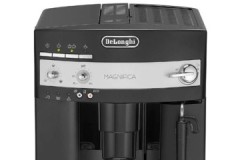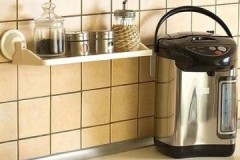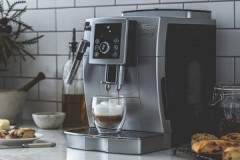Effective ways to descale your washing machine
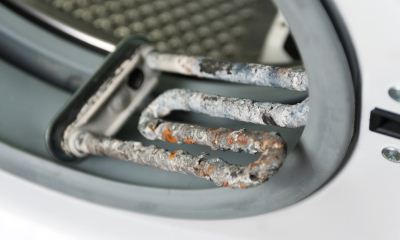 During operation, scale forms on the elements of the washing machine. This is due to the release of limescale from the water when heated.
During operation, scale forms on the elements of the washing machine. This is due to the release of limescale from the water when heated.
The rate of sludge formation is influenced by the intensity of use, the frequency of washing at high temperatures, and the hardness of the water.
High-quality regular cleaning helps to cope with the problem. Read about how to remove scale in a washing machine at home in the article.
Content
When to clean the machine?
 Descaling the washing machine should be done periodically. This will avoid volumetric accumulations that impair the performance of the device and contribute to equipment breakdown.
Descaling the washing machine should be done periodically. This will avoid volumetric accumulations that impair the performance of the device and contribute to equipment breakdown.
The visible part of the drum, in which the laundry is placed, almost always looks shiny and clean... But this circumstance has nothing to do with the state of the heating element and the outer part of the drum.
The recommended frequency of cleaning is once a quarter, with very rare use of the washing machine - a couple of times a year. How often preventive maintenance is performed is influenced by the hardness of the tap water.
If the water in the system is hard, and washing is carried out mainly on a long cycle with high water heating, cleaning of lime deposits should be carried out more often, every 2 or 2.5 months.
How to clean with folk remedies at home?
It is not necessary to use special commercial products to remove limescale. Even simple homemade recipes give good results.
How to remove with vinegar?
A table bite is not only a food product, but also an effective means for removing lime from the surface of the tubular heating element and other parts of the washing machine. You will need 400-500 grams of it.
Phased work:
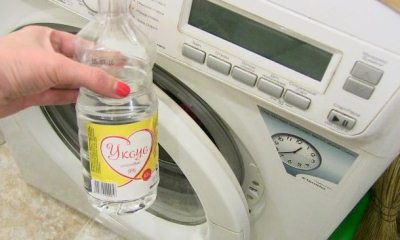 Gently pour all the vinegar into the detergent compartment.
Gently pour all the vinegar into the detergent compartment.- Set a long wash mode with a water heating temperature of + 90 ° C, for example, "cotton".
- Start washing.
- After completing the wash, wipe the inside of the machine and ventilate.
No prior dilution of vinegar with water is required.
Soda with vinegar
You can clean the machine not only with vinegar alone, but also with soda.The process of removing deposits by this method:
- combine in a separate container for ½ cup of soda and vinegar;
- pour the resulting solution into the detergent compartment;
- directly into the drum itself, pour another 1 glass of undiluted vinegar;
- set a long wash in hot water;
- start the cycle;
- wipe the drum and rubber parts around the door.
Lemon acid
The use of citric acid for descaling the washing machine is a widely popular and very effective method. For such processing, you will need a large sachet of citric acid weighing 100 grams.
Work order:
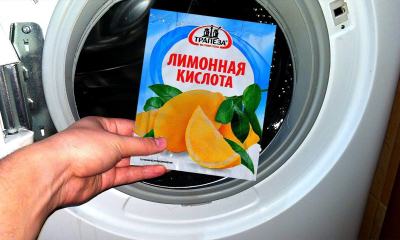 Pour the powder from the bag into the compartment for the washing powder.
Pour the powder from the bag into the compartment for the washing powder.- Set the washing mode "cotton".
- Correct the heating temperature by setting 90-95ºС.
- Start washing.
- Dry and ventilate drum.
You should not replace citric acid with lemon juice, as the result will be a solution of weak concentration, which will not be able to cope with scale. Read more about this cleaning method. here.
If the situation is running
In a situation where descaling has not been carried out for a very long time (or has never been carried out at all), standard methods may not help.
For this:
- General cleaning is carried out according to one of the recipes described above.
- Remove the upper part of the washing machine to expose the tubular heating element.
- Disconnect the sensor and wires from the heating element.
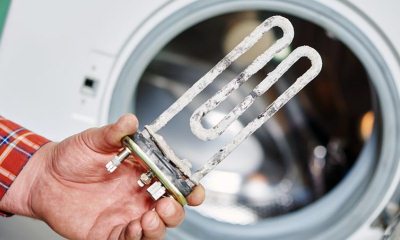 Take out the heating element.
Take out the heating element.- The heating element is carefully cleaned with a brush, removing loose lime deposits.
- From a plastic bottle with a volume of 2 liters, the upper narrow part with a neck is cut off.
- Pour inside 4 tbsp. l. citric acid and add hot water so that the heating element can be immersed in the solution to the very bar.
- Stir the solution, allowing the acid grains to dissolve in the water.
- Lower the appliance disconnected from the washing machine inside.
- Leave the heating element in the solution for at least 10 hours.
- Clean with a sponge, wipe.
- Install the heating element in place.
You also need to pay attention to the filter and drain hose. The more scale there was, the more fragments will be separated when using home and commercial products. Large particles may not enter the drain, but settle, clog the filter and hose, which will also need to be cleaned.
The use of special tools
In addition to simple home recipes, you can use special household chemicals from scale. Such products do not harm the washing machine itself and effectively remove limescale deposits. It is necessary to use household chemicals for descaling strictly according to the instructions for the preparation.
MAGIC POWER
To clean the elements of the washing machine that come in contact with water and are prone to scale build-up, you can use the German product MAGIC POWER. The product is produced in Germany.
There are two forms of release:
- gel;
- powder.
Application is not difficult. If a gel is selected, then the procedure is as follows:
- Pour ½ to 1 bottle of product into the washing machine.
- Start washing at a temperature of + 60 ° C.
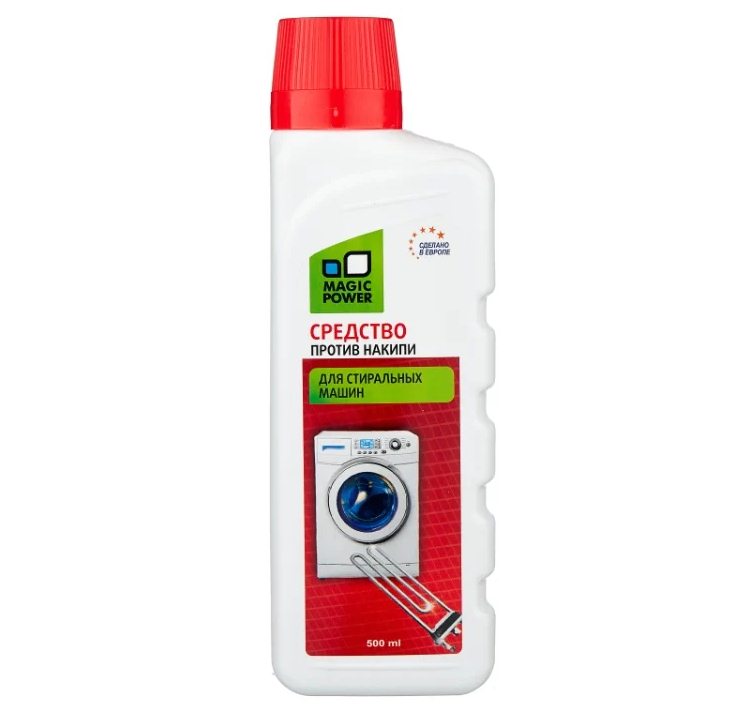
The powder is effective, due to the acids included in it, already at a temperature of + 40 ° C. How to use the powder:
- Pour powder according to the instructions into the detergent compartment.
- Set the washing mode by adjusting the temperature.
- Start washing.
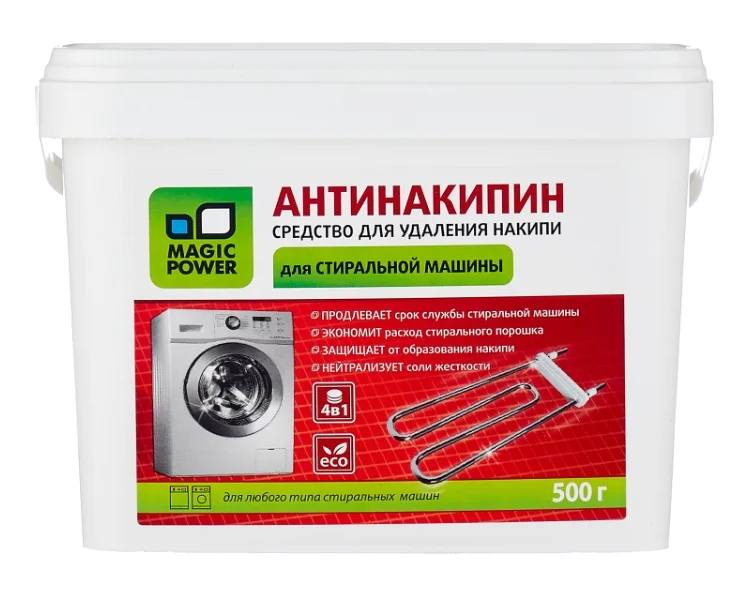
The cost of the goods depends on the form of release. For a gel it is 200 rubles for a half-liter bottle, for a powder - from 100 rubles for a half-kilogram pack.
Express Cleaner Topperr
Powder TM Topperr is designed to remove scale from washing machines and dishwashers. The drug is produced in small packages weighing 125 grams.Price for 1 pack - from 200 rubles.
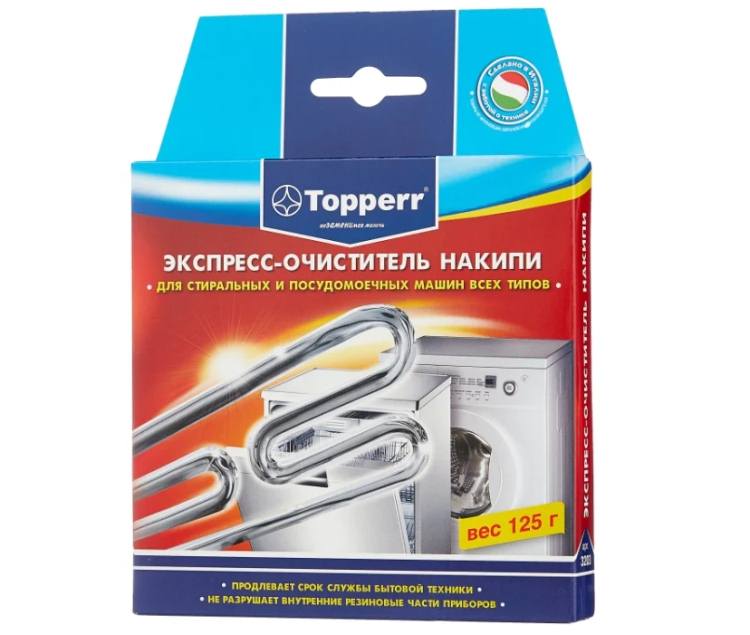
Dr. Beckmann
The product is available in liquid form... In addition to removing scale, the product helps in removing mold and unpleasant odors.
The cleaner is poured into the powder compartment and the wash is started at + 60 ° C. A container with a volume of 250 grams costs from 300 rubles.
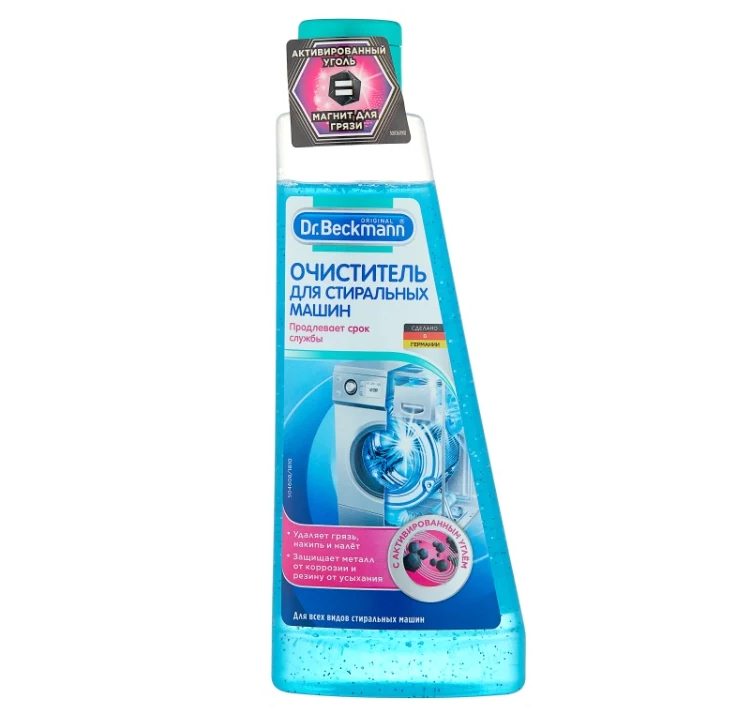
How to clean the powder compartment?
Washing machine cleaning should be carried out in a comprehensive manner. In this case, it is necessary to pay attention not only to the heating element, but also to the compartment for the powder. Deposits also form on its surface and in the niche where it is inserted.
This leads to:
- hard water;
- leftover detergent that is not completely washed out;
- the remains of the air conditioner;
- dust and other pollutants.
The order of work:
- Pull the container out of the hole.
- Detach the removable part in the air conditioner compartment from the cuvette.
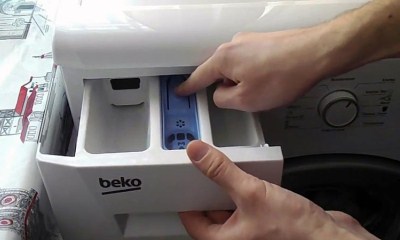 Rinse with water.
Rinse with water.- Using baking soda and a brush, treat the container from all sides.
- In case of significant lime deposits it is possible to use whiteness for cleaning.
- In a bowl of suitable size, in which the removable container fits the whole, pour hot water and dilute the citric acid bag.
- Dip the cuvette in a bowl and leave for at least 1 hour. You can - longer. If there is significant scale deposits, the cuvette can be left soaked in citric acid for several hours.
- Brush, paying attention to all joints.
- Wipe off the cuvette.
- Install the removable part for the air conditioner compartment.
- Place the cuvette back into the grooves.
It is convenient to use an old toothbrush with a small working head to clean the container.
How to clean the powder tray from scale and mold, the video will tell you:
Cleaning the drain hose and filter
If cleaning is limited to only running the washing machine on a vigorous cycle (with hot water and descaling agents), the washing machine has not yet been fully cleaned.
The filter and drain hose, through which water leaves the device into the sewer, can be clogged with various debris - lint, hair, scraps of paper and pieces of peeled scale.
Procedure for flushing the filter:
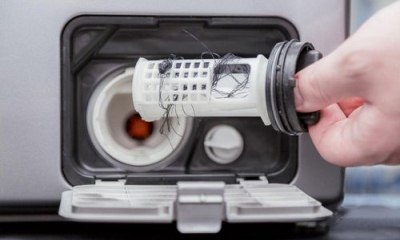 prepare rags, a container for water, napkins and brushes;
prepare rags, a container for water, napkins and brushes;- open the protective panel, which is usually located on the front part at the bottom;
- lay enough rags on the floor in this place to absorb water;
- turning the filter counterclockwise, unscrew it and remove;
- clean it from debris and rinse in water.
The hose is flushed as follows:
- through the drain filter, the rest of the water from the machine can be drained into a prepared container, for example, into an empty jar;
- the hose is disconnected from the drain point (sewer pipe);
- taking into account the design features, disconnect the hose and wash it.
It is recommended to clean the filter and hose at least 4 times a year, preferably more often.
How to clean a filter in a washing machine, video instruction:
Prevention of plaque
It is almost impossible to completely prevent the formation of limescale in the washing machine. Preventive measures include the following:
- Install filters at the entrance to the house (apartment), which would purify water from mechanical and other pollutants, as well as soften its composition. One of the filtration options is a magnetic filter capable of changing the crystal structure of water.
- Periodic descaling of the washing machine using one of the methods.
- Refusal to wash worn-out products, as well as those from which pile and threads are separated. During washing, such particles quickly adhere to the heating element and accelerate the formation of scale.
- Refusal to machine wash heavily soiled things - in solvents, building mixtures, etc. These substances can also stick to the heating element and contribute to lime fouling of the heating element.
- Frequent washing at high temperatures with long cycle times also contributes to the formation of limescale.
7 recommendations on the topic
Professional advice will help you clean efficiently and without unpleasant consequences:
 When cleaning the machine, make sure that there are no items left in the drum. There should also be an empty compartment for detergent and softener.
When cleaning the machine, make sure that there are no items left in the drum. There should also be an empty compartment for detergent and softener.- Do not use more than one descaling agent at the same time, as this increases the likelihood of damage to the elements of the washing machine.
- We recommend that you wear rubber gloves when cleaning the washing machine.
- The powder compartment should be cleaned as needed. Better - more often.
- Scale not only threatens equipment breakdown, but also increases the operating time of the device, the consumption of detergents and electricity.
- After a wash cycle with one of the descaling agents, you should inspect the machine in the area of the rubber bands. You should also bend them back to check if there are any residues of lime under them, which peeled off during the run.
- It is undesirable to use sharp objects and abrasive surfaces for cleaning heating elements and other elements, since these methods have a high probability of mechanical damage to the elements of the apparatus.
Lots of useful and important information on how to descale household appliances - here.
Related videos
How to descale the washing machine with vinegar and citric acid, the video will tell:
Conclusion
Cleaning the washing machine from limescale should take place on a regular basis in the complex. This will prevent breakdowns, extend the life of the components and maintain the hygiene of the machine.

